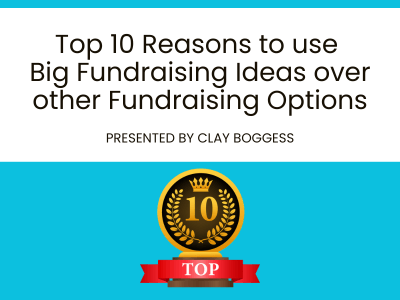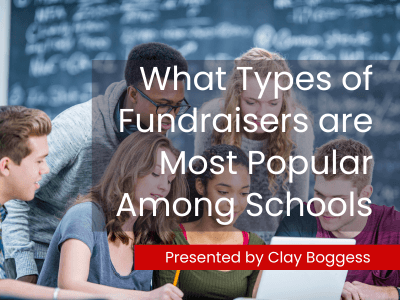
Common incentive mistakes you don't have to make.
Selecting your fundraiser incentive is essential because you must inspire your students to go out and make sales. If you know what you're doing and can develop a practical and comprehensive reward plan, chances are you can get a good percentage of your students to participate.
There's indeed more to a successful sale than how you incentivize your students; however, there are also critical mistakes that some sponsors tend to make that ultimately hurt their results.
Here are three common fundraiser incentive mistakes you'll want to avoid before your next sale.
1. Relying on the Company Prize Program
Does the complimentary prize program offered by the fundraising company provide enough motivation by itself? After all, it's not costing you anything. The good thing about the company incentive program is that, unlike a top-seller prize or drawing, every student will get something if they participate.
However, you need both. You aim to target everyone with a basic prize program broadly and include additional incentives to inspire your more competitive students to sell even more. The other thing supplementing your prize program does is get more students to consider jumping into the selling arena. Therefore, your participation percentage and your average units sold per seller increases.
2. Exchanging Incentives for Profit Percent
This is a common misconception. Some sponsors believe that prize programs only cut into their profit. What if you could negotiate a higher percent profit in exchange for giving up the prize program offered by the company? But then ask the same question another way. Would you settle for fewer students selling fewer items for a higher profit percentage?
The major flaw with this thinking is that no one takes profit percentage to the bank; they take money. You'll make less money if you take away the incentive many of your students may have to sell.
3. Your Fundraising Purpose is Enough
Shouldn't the reason you're selling in the first place be enough to inspire your students to participate? You think that they don't need an external motivator. After all, your students are there because they're interested in what the organization represents. For example, a baseball player wants to play baseball, so he should understand the team's needs.
The problem with this thinking is that even though your students are interested in the group's activities doesn't mean that they'll want to sell. Successful fundraisers are based on convincing as many students to participate as possible and then helping them achieve their sales goals. Incentives help provide the vehicle to make that happen.
Another common mantra is that if they sell, they'll see the benefit; if they don't, they'll have to do without. Therefore, they should comprehend the importance of selling without needing a fundraiser incentive. That's true, but what have you accomplished if you do not reach your sales goal?
In the end, if you're concerned about not getting a good return on your investment, there are ways that you can incentivize your students without even using money. Therefore, you shouldn't have any more reasons not to use a comprehensive reward plan.
Author Bio
Clay Boggess has been designing fundraising programs for schools and various nonprofit organizations throughout the US since 1999. He’s helped administrators, teachers, and outside support entities such as PTAs and PTOs raise millions of dollars. Clay is an owner and partner at Big Fundraising Ideas.



